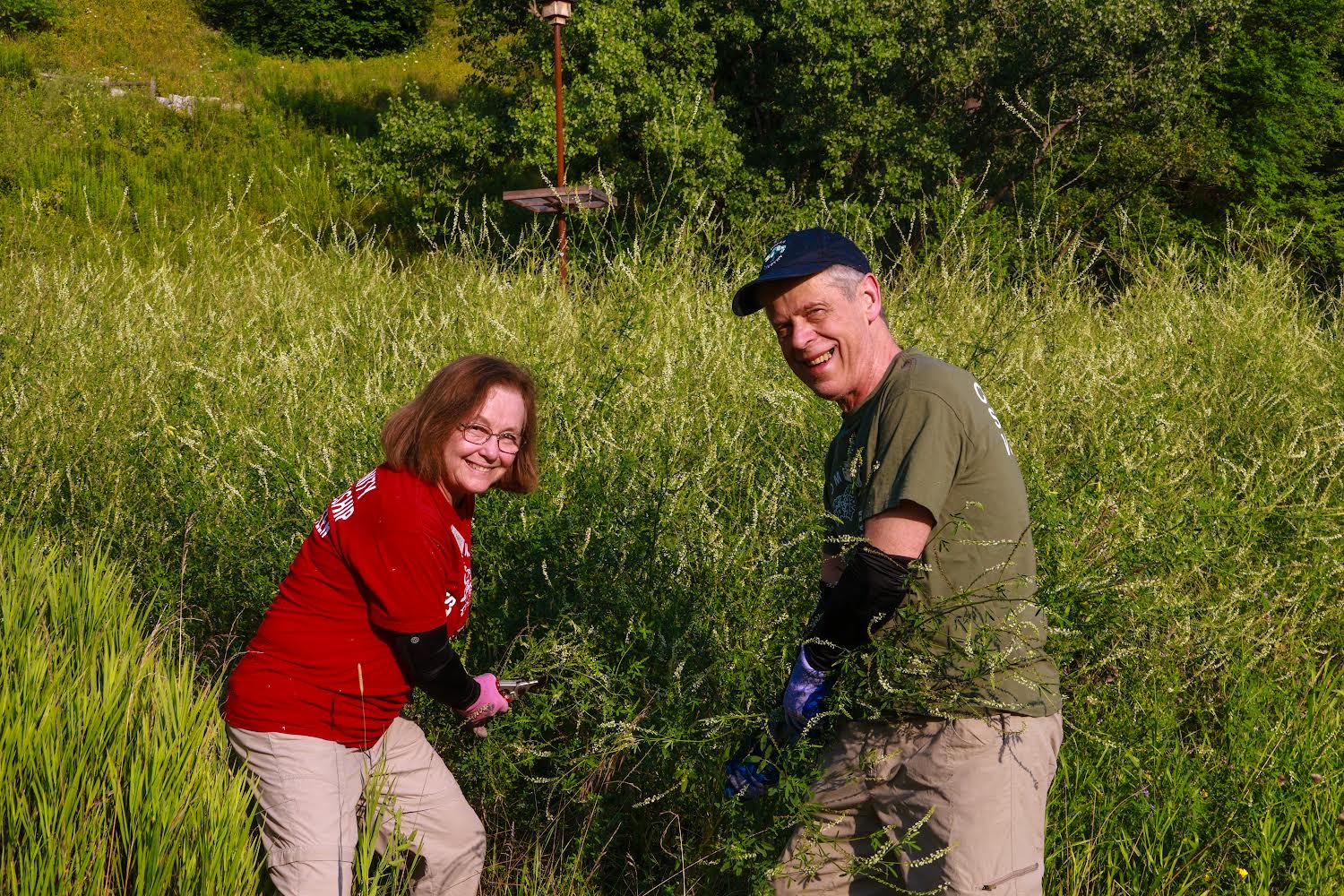Dennis Hanagan –
Volunteers are rolling up their sleeves for another year of fighting invaders in the Don Valley. Plant invaders, that is, plants that encroach on established ecosystems and threaten otherwise thriving species.
Invasive plants “compete heavily for resources such as light, moisture and soil nutrients,” says Janette Harvey, supervisor of Toronto’s Natural Environment & Community Programs. “They don’t have the same checks and balances when they’re brought into a new environment.”
Volunteers like Carey and Richard Austin assist the city’s Community Stewardship Program. Every year from spring to fall, volunteers in groups of about 30 remove invasive plants at nine sites.
Garlic Mustard, Dog Strangling Vine, Phragmites and Buckthorn are among the targeted aggressive species, Carey told the bridge. Once an area is cleared, volunteers plant hundreds of native plants, shrubs and saplings.
Carey was a science teacher with the Toronto District School Board, teaching ecosystems to Grades 7 and 9 students. “I wanted to live the stewardship experience and bring those stories to my lessons,” she says.
She’s done that for 18 years, working at Riverdale Farm, Riverdale Park East and now at the Don Valley Brickworks. Husband Richard joined her about eight years ago after observing her excitement about her volunteer work. “He quickly was hooked and became a devoted regular,” Carey says.
Richard says the city’s parks, ravines and green spaces “give us so much [that] it’s rewarding to be able to give back some care and nurturing. The converse of enjoying the outdoors in Toronto is to be willing to invest in caring.”
Aggressive plants have many ways to invade where they don’t belong. Seeds can hitch rides on people, pets and equipment that’s moved from place to place.
“In some cases they can be planted in gardens, then escape into natural areas,” says Harvey. “They can be garden waste that’s dumped into natural areas … People introduce them into their gardens (from garden centres) and don’t realize they’re invasive.”
Harvey says seeds can come from as far away as Europe and Asia. “There are lots of different invasive species in Toronto. Each site that these volunteers work at has a different challenge.”
As well as pulling up invasive plants, volunteers learn about the environment from Urban Forestry and the Toronto and Region Conservation Authority staff when their work brings them near an invasive site. Some speakers are Indigenous, the original stewards of Canada’s land and water.
“They have a lot of knowledge on wildlife habitat, aquatics, ecology, pollinator habitat and flood protection,” says Harvey. Local wildlife includes red-winged blackbirds, herons, purple martens, beavers, muskrats, butterflies, snapping turtles and midland painted turtles.
Harvey says volunteers come from the ranks of retired older adults, teenagers wanting to earn community service hours, people preparing for an environmental career and some simply curious about the natural world.
“We welcome everybody,” says Harvey. “We don’t require that anybody has any special skills or knowledge or education.”
Carey sums up her work preserving Toronto’s natural environments: “Each week is a workout with benefits. We all leave satisfied that we’ve spent two meaningful hours.”
Interest in volunteering? Visit toronto.ca/greentoronto or email [email protected] before an April 16 virtual orientation meeting.




